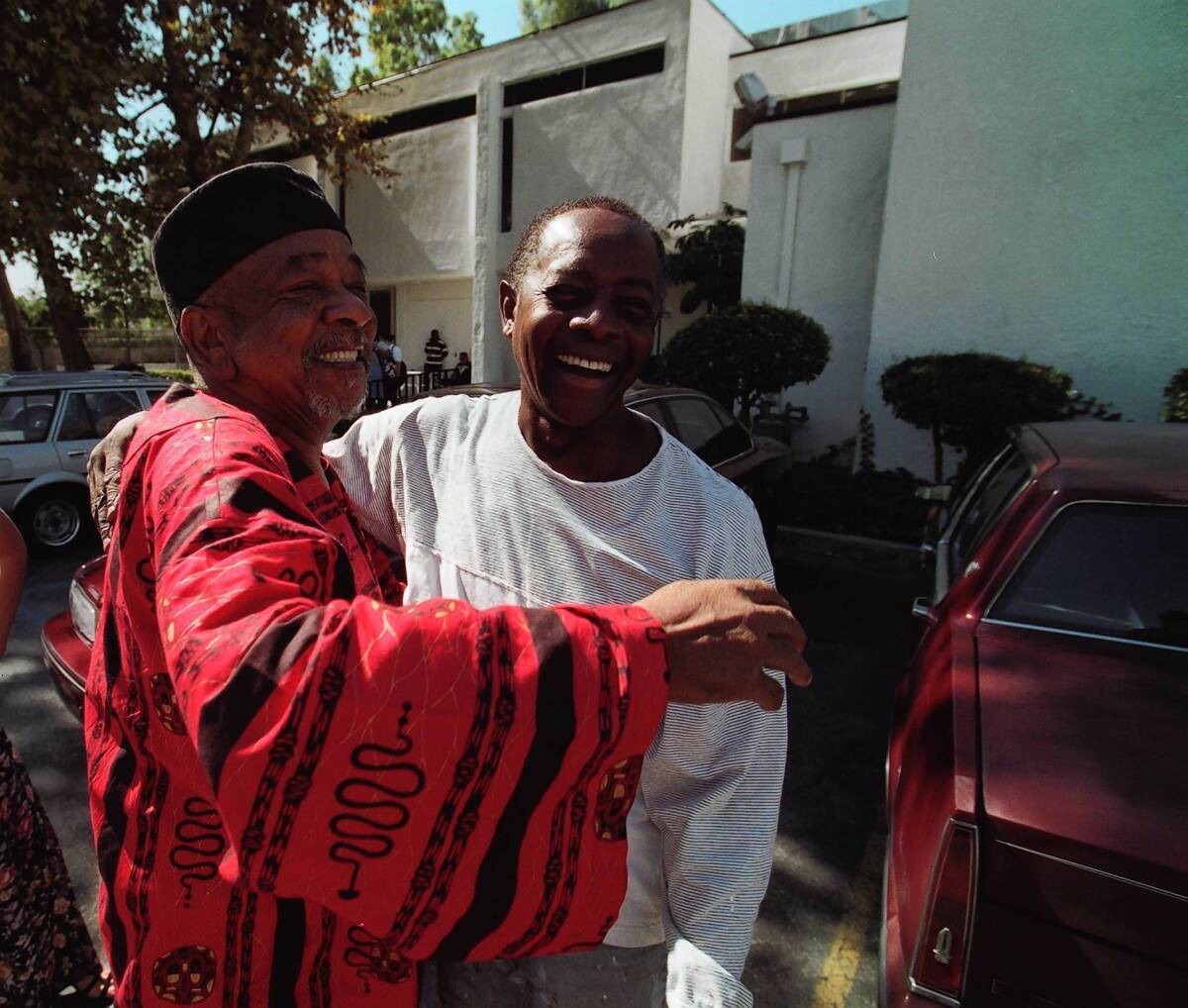Cecil Fergerson dies at 82; LACMA curator advocated for minority artists

Cecil Fergerson, an art curator and activist who advocated for minority artists, got his first job right out of high school in a major museum. As a janitor.
That was just about the only work available to African Americans in 1948 at the Los Angeles County Museum of History, Science and Art. By the time the Los Angeles County Museum of Art had broken off as a separate entity in the early 1960s, he had fought his way up to the position of museum helper. He co-founded the influential Black Arts Council, and when he left the museum in 1985 it was as a curatorial assistant.
He went on to use the organizational skills he learned at the institution to create dozens of exhibitions at a wide range of venues, including community centers, parks, schools, churches, libraries and festivals, to expose works by artists of color to the public. He earned numerous awards and in 1998 was named by the city as a Living Cultural Treasure.
All this from a man who had no formal training in art.
Fergerson, 82, died Wednesday at the Kaiser Permanente West Los Angeles Medical Center, according to his wife, Miriam. He had been in failing health for several years, she said, and had been admitted to the hospital in August with pneumonia.
“I think he changed the culture of Los Angeles,” said Columbia University art historian Kellie Jones, who organized the highly regarded “Now Dig This! Art and Black Los Angeles 1960-1980” exhibition at the Hammer Museum in 2011. “Not only by exhibiting African American artists, but by exposing young people to these artists. You’d take a kid to a museum before then, and I’m not saying it wasn’t a valid experience, but it wasn’t saying, ‘You could be an artist.’
“Cecil changed that.”
Fergerson was born outside the small town of Boley, Okla., on July 6, 1931. His parents came to Los Angeles in search of work when he was 7 and eventually settled in Watts, according to an extensive interview he did in 1990 for the “African-American Artists of Los Angeles” oral history project sponsored by UCLA.
Graduating from Jordan High School, he got a civil service job as a custodian in the museum in Exposition Park. At that point, he was not at all interested in the area that would eventually become his passion in life.
“Art really wasn’t fascinating to me,” he said in the oral history, “because you’d walk around there and all you’d see was all these portraits of white folks.”
In 1953 his job was elevated to museum helper, which meant he worked to move and install artworks. He began developing an interest in art, especially because of an exhibition of French Impressionist paintings at the museum, and he began to extensively read about the topic and attend lectures.
It was the 1965 Watts riots that set him on a path of advocating for artists of color. “I began to ask myself how I could get involved in the aftermath of the rebellion,” he said in the oral history. “I quickly observed the fact that there were going to be a lot of things that were visual programs that people were doing.” In 1968, he and a fellow employee at the museum, Claude Booker, founded the Black Arts Council to press for more African American involvement in LACMA programming and the appointment of a black curator.
“The museum was slow to respond,” admitted LACMA in an essay written for its 1976 exhibition, “Two Centuries of Black American Art,” so Fergerson and Booker took their cause to outside groups. They organized tours and exhibitions and conducted cultural programs for the annual Watts Summer Festival.
When Fergerson left LACMA in 1985, he devoted himself to community institutions, continuing his work for the festival and serving as curator for shows at the William Grant Still Community Arts Center and Watts Towers Arts Center.
He was a familiar figure at community events, dressed in African garments. “He was always wearing a dashiki,” said writer Emory Holmes II, who has profiled Fergerson. “You show up at his doorstep at 5 a.m., and if he’s up, he’s wearing a dashiki.”
His purple house in the Pico-Fairfax district became a meeting place for artists, where Fergerson was always ready to discuss the history of African American art in Los Angeles and remind young artists that they needed to document the times they lived in.
“We called him ‘The Godfather,’” said one of the artists he mentored, Michael Massenburg. Fergerson did not always choose works for his shows solely on the merit of the pieces, he said. “If you were serious about making art, if it was in your heart, he would not pass judgment.
“He had an open-door policy for anyone who wanted to truly express themselves.”
In addition to his wife, Fergerson is survived by five children, nine grandchildren and seven great-grandchildren.
A public tribute to his life will be held Sept. 28 at 1 p.m. at the Watts Labor Community Action Committee, 10950 S. Central Ave., where the art gallery is named for Fergerson.
More to Read
Start your day right
Sign up for Essential California for the L.A. Times biggest news, features and recommendations in your inbox six days a week.
You may occasionally receive promotional content from the Los Angeles Times.







